





While not the showiest flower, burnet does have a certain charm and elegance. If you have a damp site, then these plants are ideal for use as a garden ornamental. Some even have edible leaves for soups and salads. They are highly sought by floral arrangers. Let me introduce you to Sanguisorba, the burnets!
Sanguisorba, commonly called burnet, may not be the most familiar garden ornamental. The genus contains 18 species of perennials whose leaves and flower stems arise from a thick creeping rhizome. Typically the leaves are pinnate with elliptic to rounded, scalloped leaflets. The flowers, which are produced from mid-summer through early fall, have no petals and appear like a bottlebrush. Although you would never think it, they are members of the rose family. This genus is native to north temperate zones, often in damp sites. The latin name comes from the words ‘sanguis', blood and ‘sorbeo', to soak. Historically, an infusion of this plants leaves was used to staunch blood flow.
Burnet are most useful for those gardeners who have water features or damp sites within their gardens. With the exception of S. minor, the common or salad burnet, they have no tolerance to drought. The common burnet is a bit of an anomaly since they naturally grow on dry, rocky, limestone sites. This species is native to southern Europe and central Asia. In the garden, it is most useful in the herb garden. The flower stems reach to 60-80 cm but the small, globular and somewhat spiky flowers are not particularly showy. It is better to remove these stems as they appear, to encourage the attractive leaves. The leaves are high in vitamin C and have a distinct cucumber taste, lending them usefulness in soups and salads. Plants self-seed so the removal of flowering stems will keep them under control. They are hardy to zone 4.
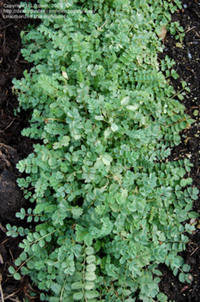
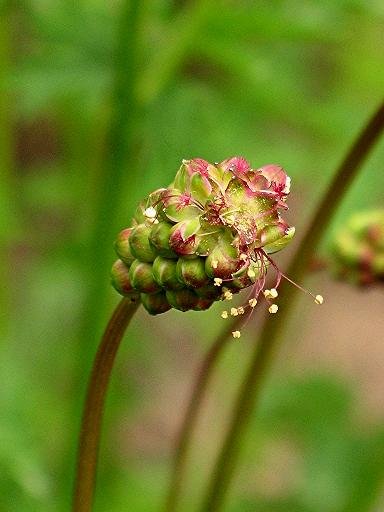
Details of S. minor.
Great burnet, S. officinalis, which hails from northern Europe, also has edible leaves and can be used in a similar fashion to S. minor. Plants get much larger with flower stems to 1m. The flowers are dark burgundy and while on the small side, can make a reasonable display in the garden. It, along with the subsequent burnet, are also useful as a cutflower. Great burnet, which is rated for zone 4, does require a damper site than S. minor. This one is also a prolific self-seeder so prompt deadheading is highly recommended. Grown for its yellow-spotted foliage is the cultivar ‘Lemon Splash'. 'Blodtopp' has brighter red-wine flowers.
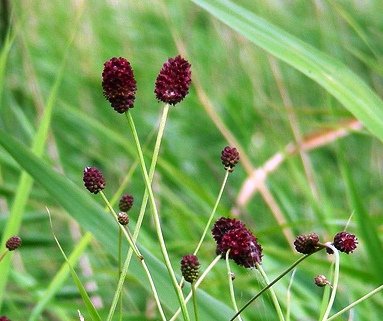
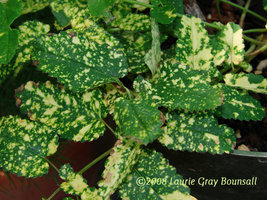
Flowers from 'Blodtopp' and foliage from 'Lemon Splash'
The North American counterpart to S. officinalis is the Alaskan or Menzie's burnet, S. menziesii. This hardy (zone 3) plant has more blue-tinted foliage than S. officinalis and larger, showier flowers. In the wild, they occur from Washington State (threatened) to Alaska and across to NE Siberia and northern Japan. This species is among the earliest burnet to bloom in the garden, from May through July. ‘Dali Marble' is a white-edged, variegated selection whose foliage contrasts beautifully with the dark wine flowers. The Asian counterpart is S. tenuifolia (zone 4) whose dark burgundy flowers are more nodding on even taller stems (to 1.5 m). The selection ‘Alba' has white flowers. This species blooms from July to September.
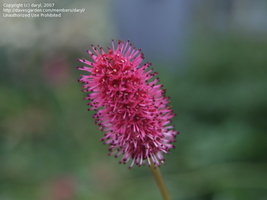
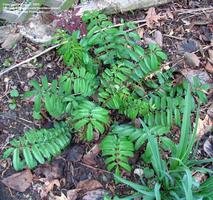
Flower from S. menziesii and foliage from S. tenuifolia.
In my area, the North American native Canada burnet, S. canadensis, is one of our most common wildflowers, growing among wet meadows, streamsides, lake shores and peatlands. This hardy burnet (zone 2) has a long blooming season, from late July through September. The elongate, creamy-white, bottlebrush flower-heads are held erect atop stiff stems 75 to 150 cm in height. I love this plant more for its lovely blue-tinted foliage than its flowers. The western North American counterpart is S. sitchensis but many authorities now consider this one to be merely a variety of S. canadensis.

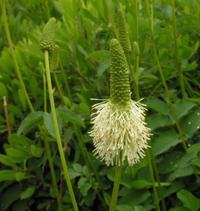
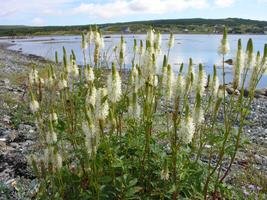
Canada burnet in the garden and the wild.
Perhaps the showiest and most elegant species is the Japanese burnet, S. obtusa. This species has the showiest and most elegant blooms of any burnet, appearing as elongate bright pink bottlebrushes.held atop arching stems. This species will reach about 75 to 100 cm. Their leaves are nearly identical to those of Canada burnet, except they are plain green. This species is more adaptable for using in a perennial border than the other burnets. It is rated for zone 5. Nearly identical in appearance (and often considered a subspecies of S. obtusa) is the Korean burnet, S. hakusanensis.
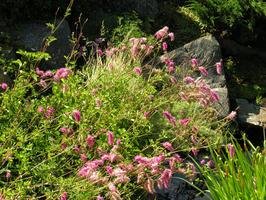
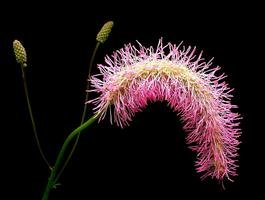
Details of S. obtusa.
There are several more species of burnet found in Asia that have yet to be introduced to North American gardeners. With the increasing popularity of water features burnet are becoming more popular as garden ornamentals. They are well worth growing for both their foliage and flowers. If ready access to water is not an issue or if you naturally have damp depressions on your property, then I highly recommend you utilize the charming beauty of burnet.
I would like to thank the following people for the use of their pictures: begoniacrazii (S. officinalis 'Lemon Splash'), daryl (S. menziesii), growin (S. minor) and mgarr (S. tenuifolia)
(Editor's Note: This article was originally published on January 3, 2009. Your comments are welcome, but please be aware that authors of previously published articles may not be able to promptly respond to new questions or comments.)
Copyright © www.100flowers.win Botanic Garden All Rights Reserved